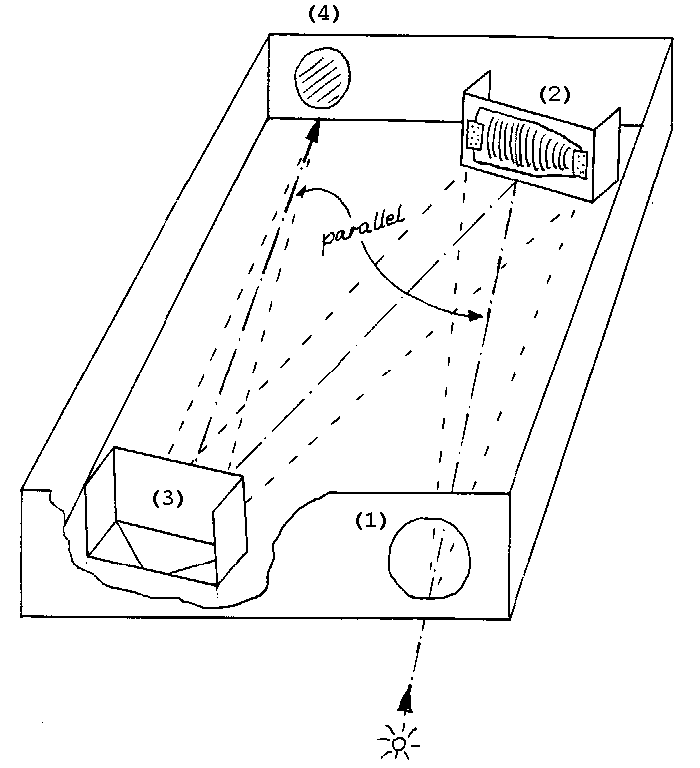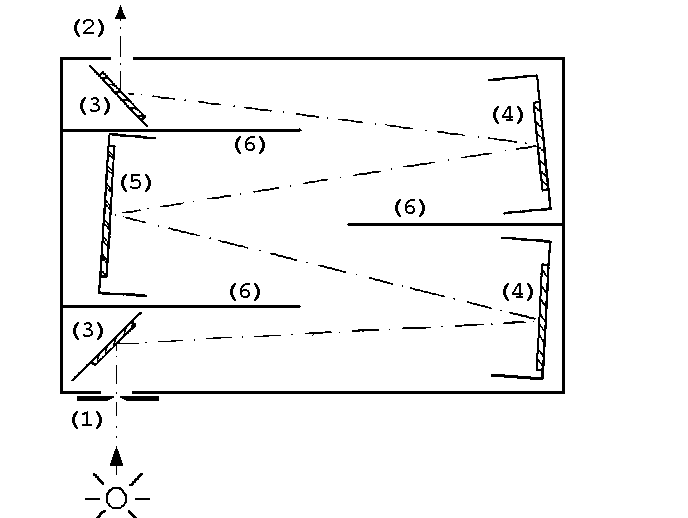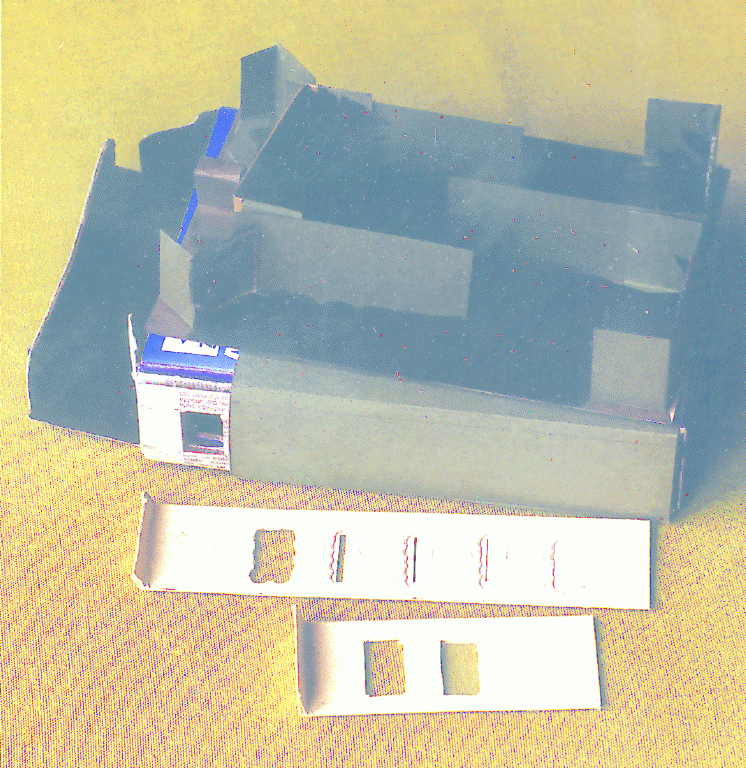
Mirrors allow us to look straight
Joachim Köppen Kiel/Strasbourg/Illkirch Spring 2007
A direct pointing spectroscope
With the simple instrument we always look away from the source,
which makes aiming somewhat difficult. With the aid of one mirror
we may build a more comfortable instrument, as shown in the sketch.
The mirror should be a front-silvered plane mirror (a piece of a
car mirror) for best results. But a simple back-silvered mirror
(cheap pocket mirror) will also do. However, bright spectral
lines will have a weak "satellite line" due to the additional reflection
by the glass surface. (1) is the entrance hole with the slit,
(2) the CD ROM on its holder, (3) the mirror on its holder, and
(4) the observation hole.

A more compact spectroscope
The critical design constraint for the size of the instrument is
that the distance between eye and slit via the CD should be a
comfortable viewing distance. Also, one wants to make the distance
large, because then most of the surface of the CD contributes to
the reflected image and thus the quality is improved.
I had found that for my naked eye a distance of about 60 cm is
a good choice. Such an optical path can be folded inside a small
box by using several mirrors (see the sketch): behind the entrance
slit (1) two mirrors (3) and (4) reflect the light to the CD ROM
(5). The outgoing spectrum is reflected by two more mirrors (4) and
(3) to the observation aperture (2), so that one looks into the
direction of the light source. A couple of baffles (6) reduce the
stray light. Again, one should use front-silvered mirrors, but I
found that with four pieces of a cheap mirror the optical quality
is still quite acceptable, only in bright spectral lines (street lamps)
the weaker companion lines on either side are noticeable. The CD ROM
and the mirrors are held by cardboard holders on a stiff base plate;
before fixing the, on the base, their orientations need to be adjusted
properly.

